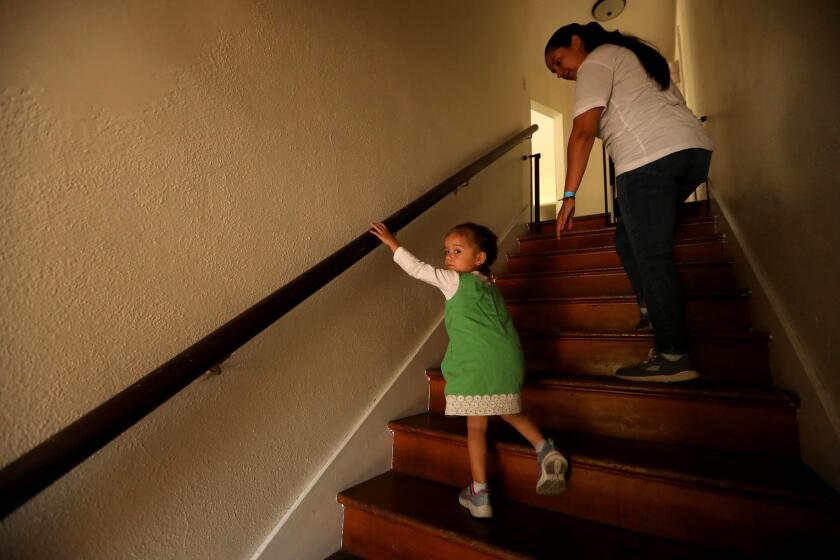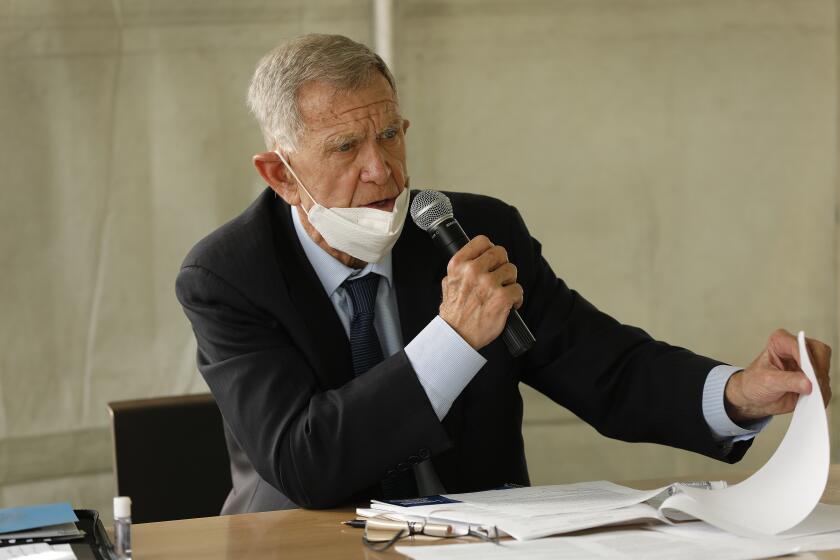Population Pressure on Housing
Dramatic demographic changes taking place in Los Angeles and throughout the Southland are critically increasing the challenges facing the housing industry.
Affordability of housing for first-time buyers, this region’s perennially high cost of homes, the sharp increases of immigrant newcomers and an ever-growing segment of the elderly population present major problems in need of solution.
A study commissioned by the California Department of Real Estate and researched by the California Assn. of Realtors, predicts that the state faces a most critical era, a period that will test its abilities to cope with providing “adequate housing for its diverse and growing population.”
How the industry and the various government agencies involved will deal with such issues will determine the success or failure of not only housing concerns but success or failure of the future economy.
The price of a home in Los Angeles, for instance, is 11.4% higher this year than last, according to newly released home price projections.
The national figure is a bit higher, 13.3%, by Chicago Title Insurance Co. estimates. Rising home prices and mortgage interest rates account for the increases, 6% for inflation and 7.3% tied to mortgage rates.
California’s population, now more than 25 million, accounted for 16% of the nation’s population increase during the 1970-1980 decade. The Golden State and two others each grew by more than 1 million residents. Also, California is one of a few Sun Belt states with a million residents who are 65 and older.
Between 1990 and 2000, 3.4 million persons will become new Californians, the association’s report predicts, agreeing with other population increase studies.
It was the decade of the ‘70s which produced a huge spurt in the number of foreign-born who became new residents of the state although total population growth of 18.6% for that 10-year span was much less than earlier decades.
For instance, from 1920 to 1930, California’s total population jumped by 65%. During World War II and up to 1950, the population increased by 53%; from 1960 to 1970, by 26%.
Meanwhile, from 1940 through 1960, foreign-born new residents represented less than 5% of each decade’s percentage of total change in state population. Then, from 1960 to 1970, it nearly doubled, rising to 9.9%.
From 1970 to 1980, the comparative figure jumped to 49%.
A continued growth in Latino and Asian populations carrying through to the start of the next century is expected, the study says, and “differences in family structure and fertility rates will increase demand for larger housing units and place further strains on the state’s infrastructure.
“While many immigrant home buyers will be restricted because of their generally lower income levels, recent changes in amnesty for illegal aliens should, over the long term, provide for greater earning power,” the study adds.
As the population nears the end of the ‘90s, “the state will experience a growing proportion of senior citizens as well, when the group will make up 12.3% of California’s population. The elderly will have definite housing demands of their own as they move toward a trade-down market consisting of empty-nesters and the retired.”
To accent that percentage figure, last year, among California home buyers, the age distribution of those 65 and older was only 3.8%. Those in the 35 to 44 age range represented 36.5% of the buyers, followed closely by the 25 to 34 age bracket with 32.8%. The other age groups accounted for the balance.
Condominiums, congregate-care facilities, upscale nursing homes and terminal care facilities are expected to fill the needs of the elderly, the study says.
With the public’s recent penchant for taking things into its own hands through the ballot box--i.e., initiative measures to adopt tax-reducing Proposition 13 and the more recent growth-limiting Proposition U--can we foresee a preponderant Latino population sponsoring a measure to revert to the city’s original name?
LA for Los Angeles would become PNSRLAP for El Pueblo de Nuestra Senora la Reina de Los Angeles de Porciuncula.



